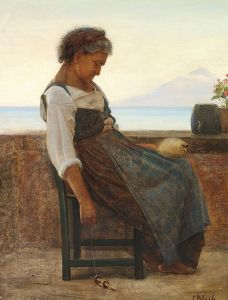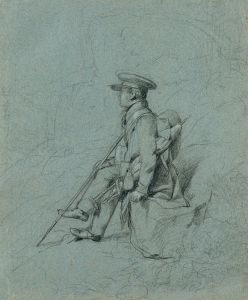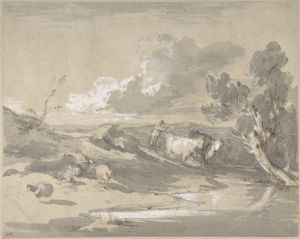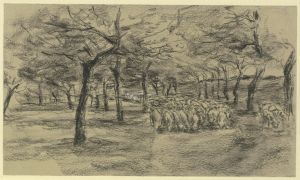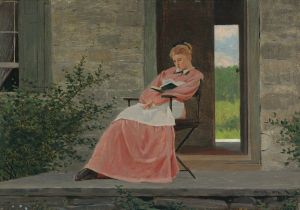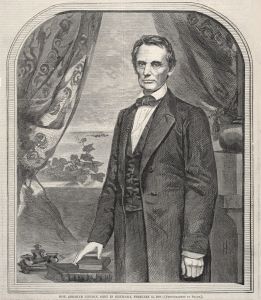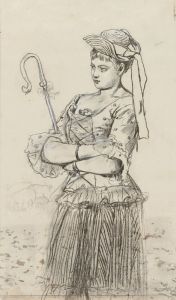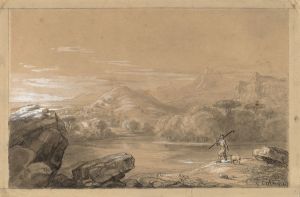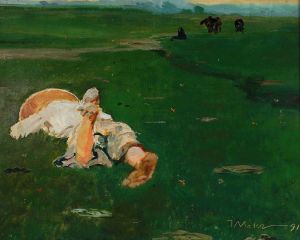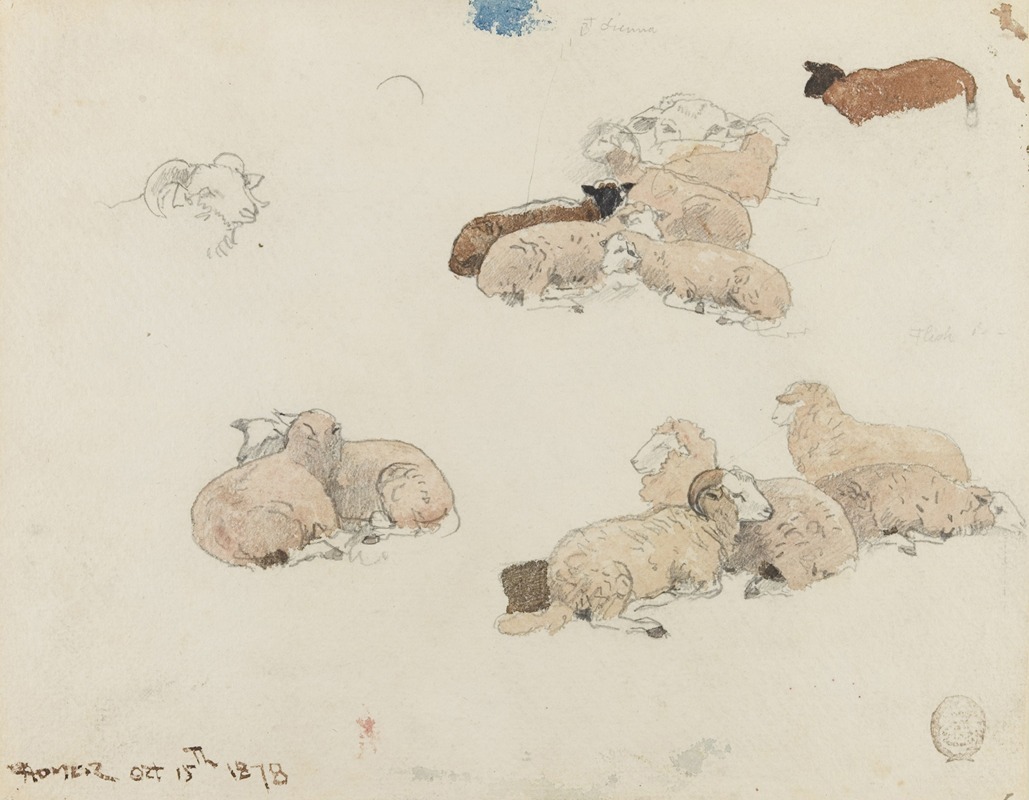
Sheep Resting
A hand-painted replica of Winslow Homer’s masterpiece Sheep Resting, meticulously crafted by professional artists to capture the true essence of the original. Each piece is created with museum-quality canvas and rare mineral pigments, carefully painted by experienced artists with delicate brushstrokes and rich, layered colors to perfectly recreate the texture of the original artwork. Unlike machine-printed reproductions, this hand-painted version brings the painting to life, infused with the artist’s emotions and skill in every stroke. Whether for personal collection or home decoration, it instantly elevates the artistic atmosphere of any space.
Winslow Homer, an American artist renowned for his landscape and marine subjects, created "Sheep Resting" in 1878. This painting is a part of Homer's exploration of pastoral themes, which he often depicted with a keen sense of realism and attention to detail. "Sheep Resting" exemplifies his ability to capture the tranquility and simplicity of rural life, a subject that was particularly appealing during the post-Civil War era in the United States when there was a cultural shift towards appreciating the pastoral and the idyllic.
The painting portrays a group of sheep resting in a serene landscape. Homer's use of light and shadow in the artwork highlights the texture of the sheep's wool and the gentle contours of the landscape. The composition is balanced, with the sheep placed in a way that draws the viewer's eye across the canvas, inviting them to linger on the details of the scene. The background is typically understated, focusing attention on the sheep and the immediate foreground, which is characteristic of Homer's style during this period.
Homer's technique in "Sheep Resting" reflects his transition from illustration to painting, where he began to experiment more with color and form. The palette is muted, with earthy tones that convey a sense of calm and stillness. This choice of color and the overall composition suggest a moment frozen in time, a hallmark of Homer's work that allows viewers to appreciate the beauty in everyday scenes.
During the 1870s, Homer spent time in rural areas of New England, which influenced his work significantly. This period was marked by a return to simpler, agrarian themes, possibly as a response to the rapid industrialization occurring in America. "Sheep Resting" fits within this context, as it reflects a nostalgic view of rural life that was becoming increasingly rare.
Homer's work during this time was also influenced by his travels to Europe, particularly England, where he was exposed to different artistic styles and techniques. This exposure is evident in his handling of light and atmosphere in "Sheep Resting," which shows a subtle sophistication that he developed during his time abroad.
"Sheep Resting" is part of a broader body of work that includes other pastoral scenes, demonstrating Homer's versatility and his ability to capture the essence of the American landscape. While he is more widely known for his later marine subjects, these earlier works are crucial in understanding his development as an artist and his contribution to American art.
The painting is held in a private collection, and as such, it is not as widely accessible as some of Homer's other works. However, it remains an important piece for those studying his early career and the themes that would continue to influence his art throughout his life. "Sheep Resting" is a testament to Homer's skill in rendering the quiet beauty of rural America, a theme that resonates with audiences even today.





